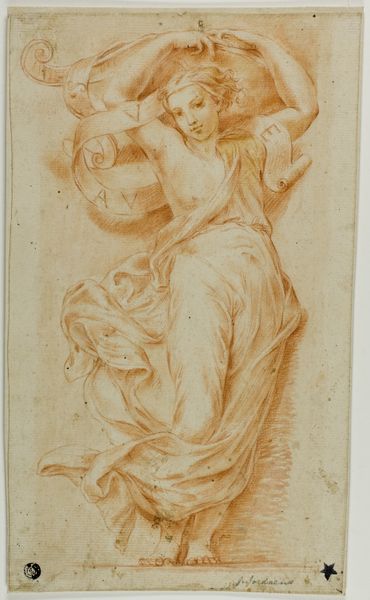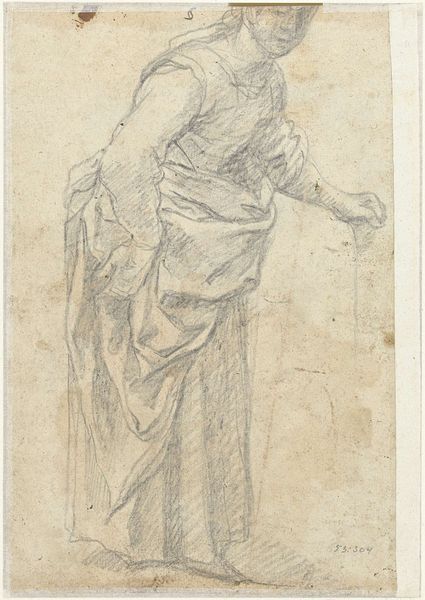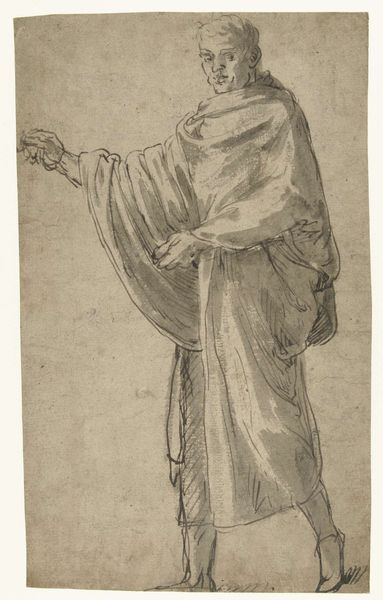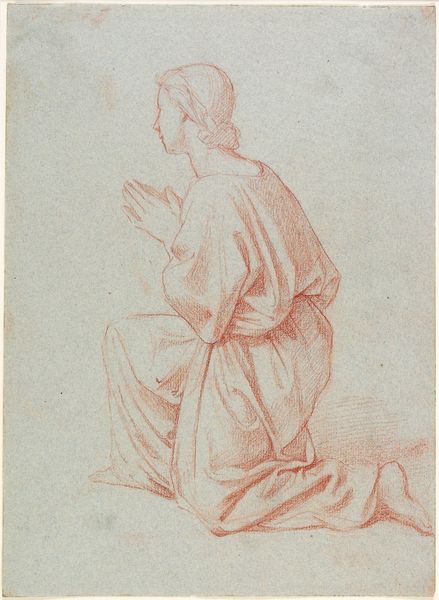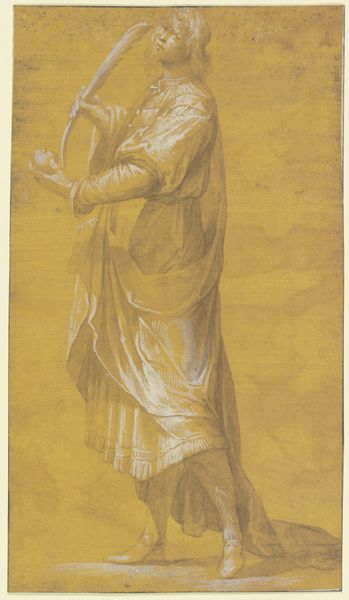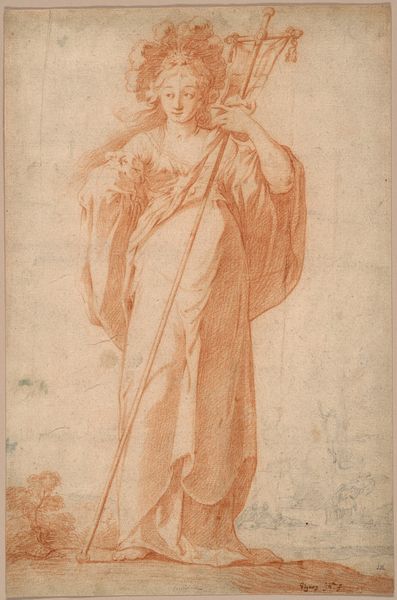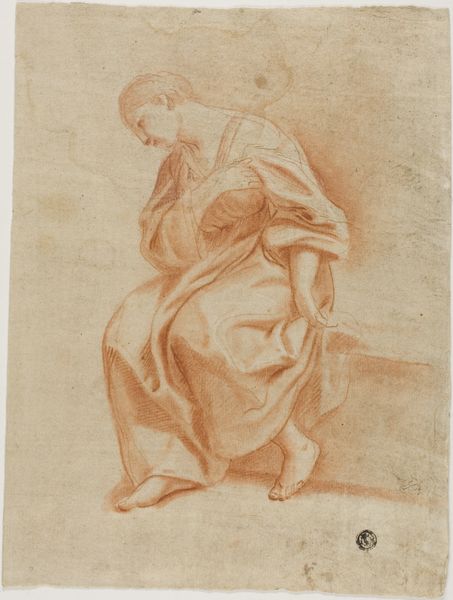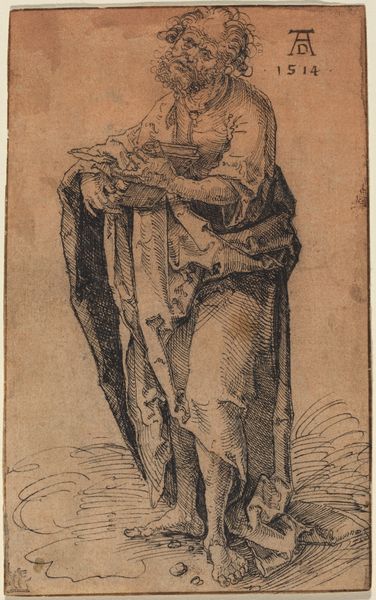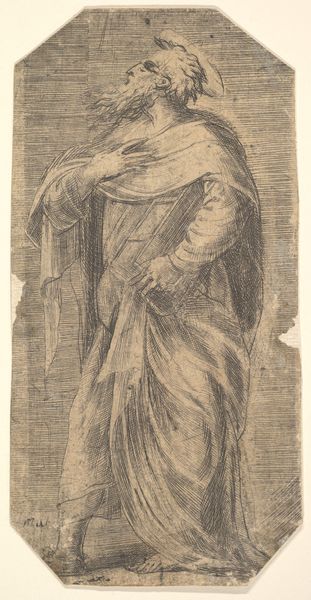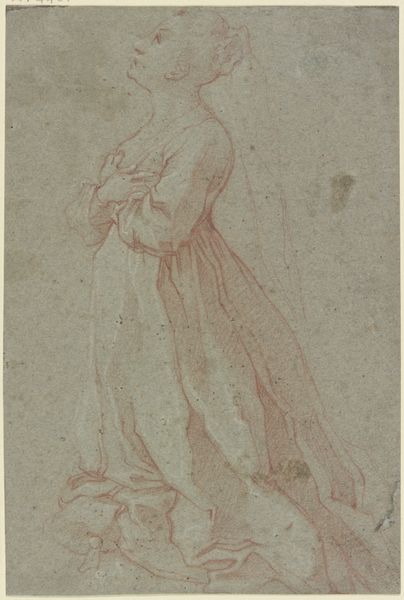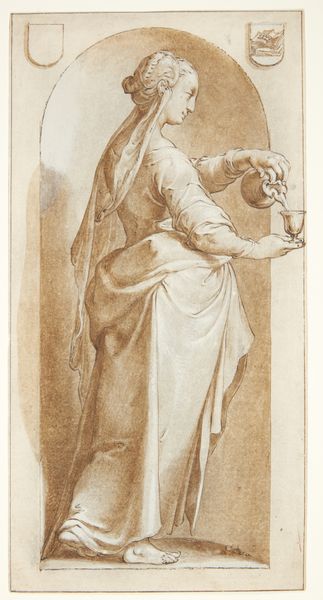
drawing, paper, charcoal
#
drawing
#
narrative-art
#
baroque
#
charcoal drawing
#
figuration
#
paper
#
pencil drawing
#
charcoal
#
history-painting
Dimensions: 12 3/8 x 10 in. (31.43 x 25.4 cm) (image, sheet)
Copyright: Public Domain
François Verdier created this red chalk drawing, Study for Raising of Lazarus, sometime between 1651 and 1730. The figure dominates the composition with a strong diagonal emphasis created by the woman’s posture, kneeling with arms outstretched upwards. Verdier’s focus on form invites a reading centered on the body's expressive potential. The stark contrast between the detailed rendering of the figure and the bare background directs our attention to the woman's emotional state, conveyed through gesture and posture. We can see how Verdier uses the red chalk to capture both the muscular tension and the flowing drapery, highlighting the Baroque interest in movement and emotion. The drawing also destabilizes traditional notions of religious art by focusing on human emotion rather than divine presence. This shift reflects broader cultural movements toward humanism, emphasizing individual experience. Verdier uses line and shading to create a dynamic composition which draws us into the emotional intensity of the scene. This drawing remains a powerful exploration of faith, emotion, and the human condition.
Comments
minneapolisinstituteofart almost 2 years ago
⋮
Verdier was a prize-winning student at the Royal Academy at Paris which resulted in his election as an academician in 1678. In 1685, he was married to a niece of Charles Le Brun (1619–90), first painter to King Louis XIV, director of the Royal Academy and the Gobelins tapestry factory, and, in effect, the dictator of French artistic life until his death. Verdier received from Le Brun major commissions for the Trianon at Versailles and Gobelins. After 1699, Verdier devoted himself to drawing and engraving. Verdier’s drawing of a kneeling woman, dating about 1677, is a study for a figure in a painting The Raising of Lazarus for the church of Notre-Dame, Paris. It epitomizes the manner dictated by the Royal Academy. Importance was attached to clear, distinct forms. Bold strokes of red chalk on tan paper define the contours of the figure. Precise parallel red chalk strokes impart volume and plasticity to the drapery. Subtle passages of white chalk achieve the highlights.
Join the conversation
Join millions of artists and users on Artera today and experience the ultimate creative platform.

